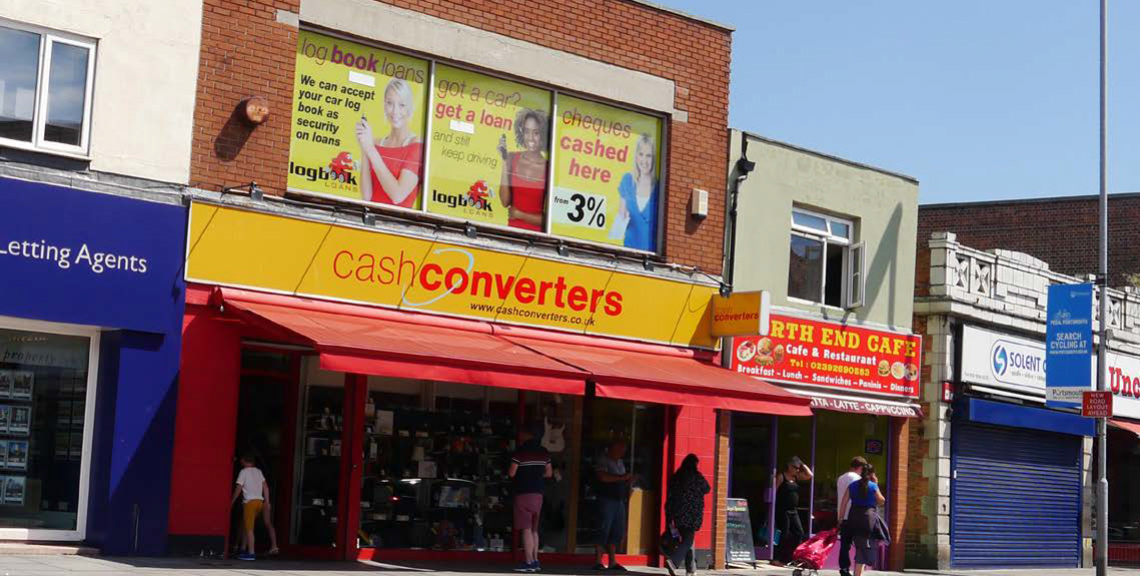TOO MUCH OF OUR RETAIL PROPERTY IS FALLING UNDER THE ENVIRONMENTAL RADAR
ENVIRONMENTAL LEVELLING UP
It is sometimes forgotten that the ills of the High Street long predate the pandemic; indeed, the High Street Task Force programme, which started in 2019 and is to last for five years, was a result of Sir John Timpson’s report a year earlier. It aims to improve leadership and skills in local placemaking, focusing on building capacity, growing expertise, promoting collaboration, and using data and knowledge sharing.
Chairing COP26 in November 2021 had a catalytic effect on the UK government, with a sincere drive to join up policy and practice around the green agenda with a specific focus on the route to net zero. Charged with upping our game by ministers from both BEIS and MHCLG, we appointed a sustainability expert, Hannah White, to the board and made the delivery of net zero a foundational part of the training and support to over 2,500 local leaders and stakeholders in 150 locations.

Further focus on the work of the task has happened as a result of the levers of state coalescing around the imperatives of the Levelling Up white paper, published in February 2022. There is, of course, a massive alignment in the challenges and opportunities arising from both issues.
Therefore, in a similar vein, it is entirely appropriate that Savills has taken the opportunity to bring the issues of regeneration and sustainability into focus in this year’s Reimagining Retail report. The publication will guide readers in the public and private sectors to build back, better and greener.
However, one major challenge highlighted for the first time is the “The EPC Cliff Edge”1.
WHY EPCS DO MATTER
This new data draws stark attention to the fact that without upgrading, within the decade, over a billion sq. ft of retail space will not meet the required sustainability challenge of having a “B Grade” Energy Performance Certificate. Furthermore, it obliquely draws attention to the fact that “shopping centres, retail parks and large high street blocks… only account for 25% of retail property emissions”. It would be a stretch to suggest that all of these assets are in anything that would approximate “institutional” ownership. However, it is clear that vast tracts of our town centres are owned by parties who may not have the money, motivation or knowledge to plan for these changes in good time.
EPCs themselves are far from an optimal measure in which to judge a property’s environmental performance, but they do represent a fundamental indication of the uphill struggle that most high street locations face.
Increasingly interventionists, local government, investing some of the levelling up capital, will play a part in making this change happen. But, hopefully, demanding occupiers, driven by their ESG promises to consumers, will also insist on this change happening before the deadlines.
NET ZERO HIGH STREETS
Increased community ownership and operating models advocated by fabulous organisations such as Power to Change will play their part, with the more capitalist imperative of cheaper loans for ESG compliant projects available from real estate lenders such as Lloyds and Aviva.
But irrespective of regulation, how do you pay for environmental improvements when many properties lie vacant just for want of the most basic repair?
Sustainability compliance is an additional factor that the Government must take into account when consulting on the proposed High Street Rental Auctions and their combined potential to accelerate the use of Permitted Development Rights from Class E to residential.
It is no coincidence that many of the locations with the lowest environmental performance are also those that are most occupationally challenged – these are places that tend to lack investment, but are also often critical for supporting local communities. The rationale for repurposing and reenergising retail places has never been stronger.
While we will need less physical retail space going forwards, there is a real possibility that these factors might combine to produce a retail property shortage within a decade (could it be a good time to invest in resilient retail?). Still, if not properly considered and planned for, the consequences would be to reduce the vitality of our high streets and impact our communities.
The Task Force’s mandate expires in 2024. However, I will use this important research from Savills to immediately highlight to the Government the challenges in ensuring the High Street contributes its part on the road to net zero.



